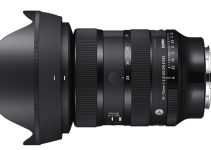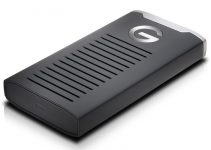Amongst the array of new features that come with the latest 2017 MacBook Pros, the inclusion of USB Type-C interface is probably the most significant upgrade of the iteration. The USB-C versatility is apparent not only in regards to data transfers but also when it comes to video bandwidth and power throughput provided by the MacBook Pro itself.
In addition, the fact that all the ports are also Thunderbolt 3-enabled means that any of them (other than the 3.5mm audio jack) can be used to power up most demanding peripherals compatible with the interface. This option, of course, includes the use of external GPUs, which becomes more and more popular as many manufacturers begin to break into the market. The result is better graphics performance, which is particularly useful for video editors who want to take advantage of GPU-Accelerated programs such as Adobe Premiere Pro and DaVinci Resolve.
Since the Thunderbolt 3 USB-Type C ports on the MacBook Pro Retina are compatible with eGPUs, tech-guru and filmmaker Max Yuryev decided to show off not only how to create the best eGPU setup for your MacBook Pro but also determines whether or not it’s even worth investing in.
First and foremost, when looking at the OpenCL test conducted with GeekBench 4, we can see a significant increase in graphics performance with the use of the external GPU with a score that is three times higher than using the MacBook Pro’s already adequate graphics card. In fact, using the RX580 in the eGPU module performs better than the RX580 included in the iMac.
Unfortunately, Max wasn’t able to conduct any tests in Cinebench, Unigine Heaven, or Premiere Pro due to software issues that wouldn’t allow the eGPU to be detected or function properly. Even when looking at Final Cut Pro X, it turns out that there is little to no improvement in performance using the eGPU with the MacBook Pro. Hopefully, in the future, Apple will release an update allowing better communication between their software and third-party eGPU hardware.
Meanwhile, here are the specs of the laptop and the peripherals used in the video above.
- Laptop: MacBook Pro Retina 15” 2017 – 3.1 GHz 7th Generation Intel Core i7, 16GB LPDDR3 Memory, 512GB SSD, Radeon Pro 560 w/ 4GB VRAM
- eGPU: Sonnet eGFX Breakaway Box, Thunderbolt 3-to eGPU PCIe Card Expansion System
- Graphics Card (for eGPU): Sapphire 11265-07-20G Radeon NITRO+ RX 580 4GB GDDR5 Graphics Card
All hope is not lost, though, or at least when considering the performance numbers for DaVinci Resolve. The reason why the software was able to work so well is due to the fact that the platform allows you to manually select which graphics card you want to use, making it easier for the program to communicate with the eGPU hardware.
Regarding the benchmarks in DaVinci Resolve, there are certain improvements in performance in exporting files, which is about a 30-70 percent difference. Again, performance will be affected by how complicated you edit is, which includes what effects you add. Some of these filters benefit from the eGPU because they’ve been programmed as GPU-accelerated. Moreover, timeline performance is also improved because of the eGPU which in most cases eliminates the need to pre-render before previewing your timeline.
While Premiere Pro and Final Cut Pro X cannot currently benefit from the use of an eGPU, Max provides some performance estimates if a time ever arises where Apple and other third-party manufacturers are able to develop stable software that can integrate the hardware in an effective manner.
All in all, unless you’re using DaVinci Resolve, currently it may not be the right time to invest into an eGPU for your MacBook Pro. While that may be the case, these tests go to show the direction manufacturers should be heading, that is to say, towards the ability to use eGPUs with laptops to increase performance at a fraction of the cost of buying an entirely new system.
[source: Max Yuryev]
Disclaimer: As an Amazon Associate partner and participant in B&H and Adorama Affiliate programmes, we earn a small comission from each purchase made through the affiliate links listed above at no additional cost to you.





I believe the use of e-gpus will be addressed with the release of mac OS high Sierra
It was. It works beautifully. Then FCPX 10.4 broke it.